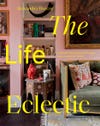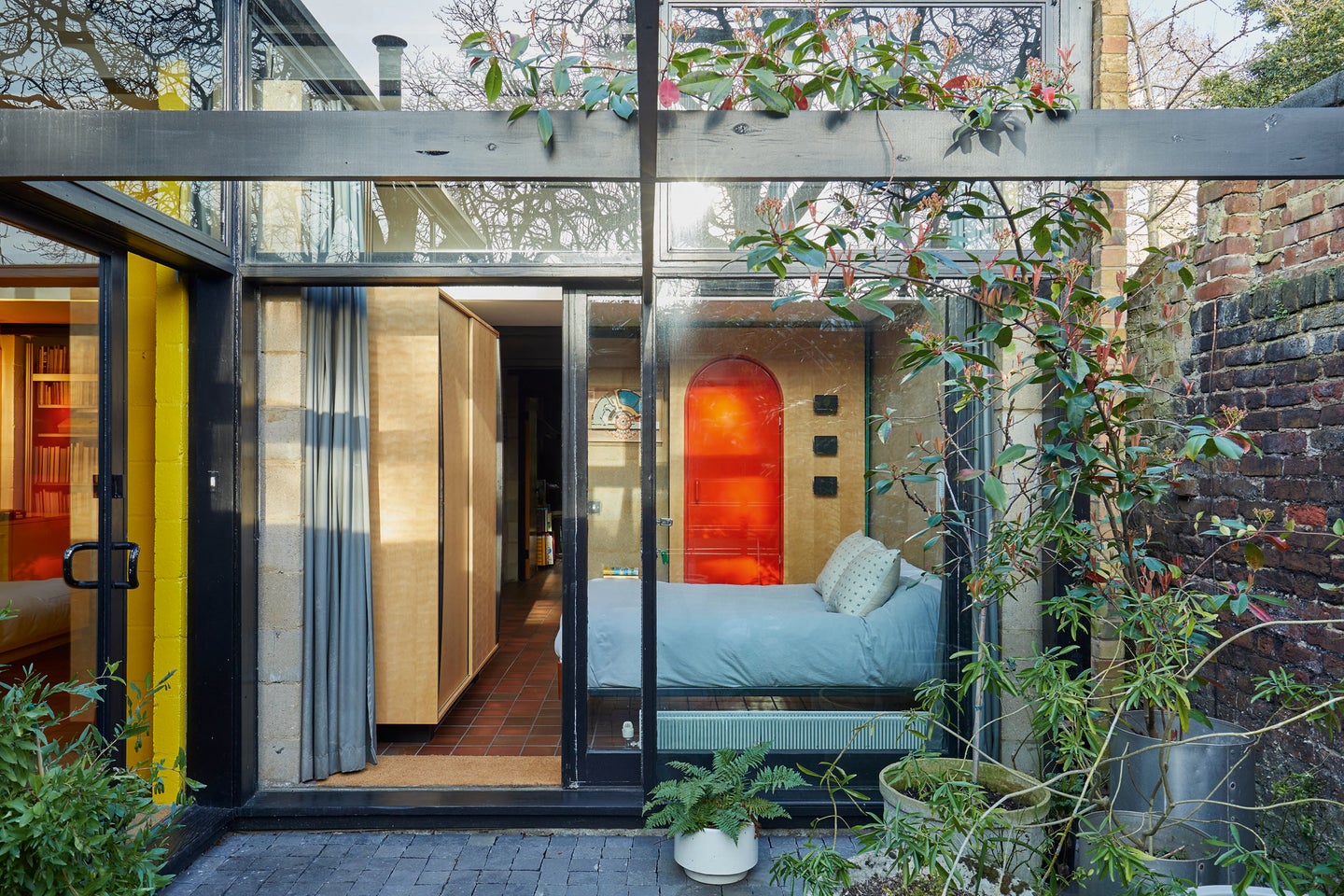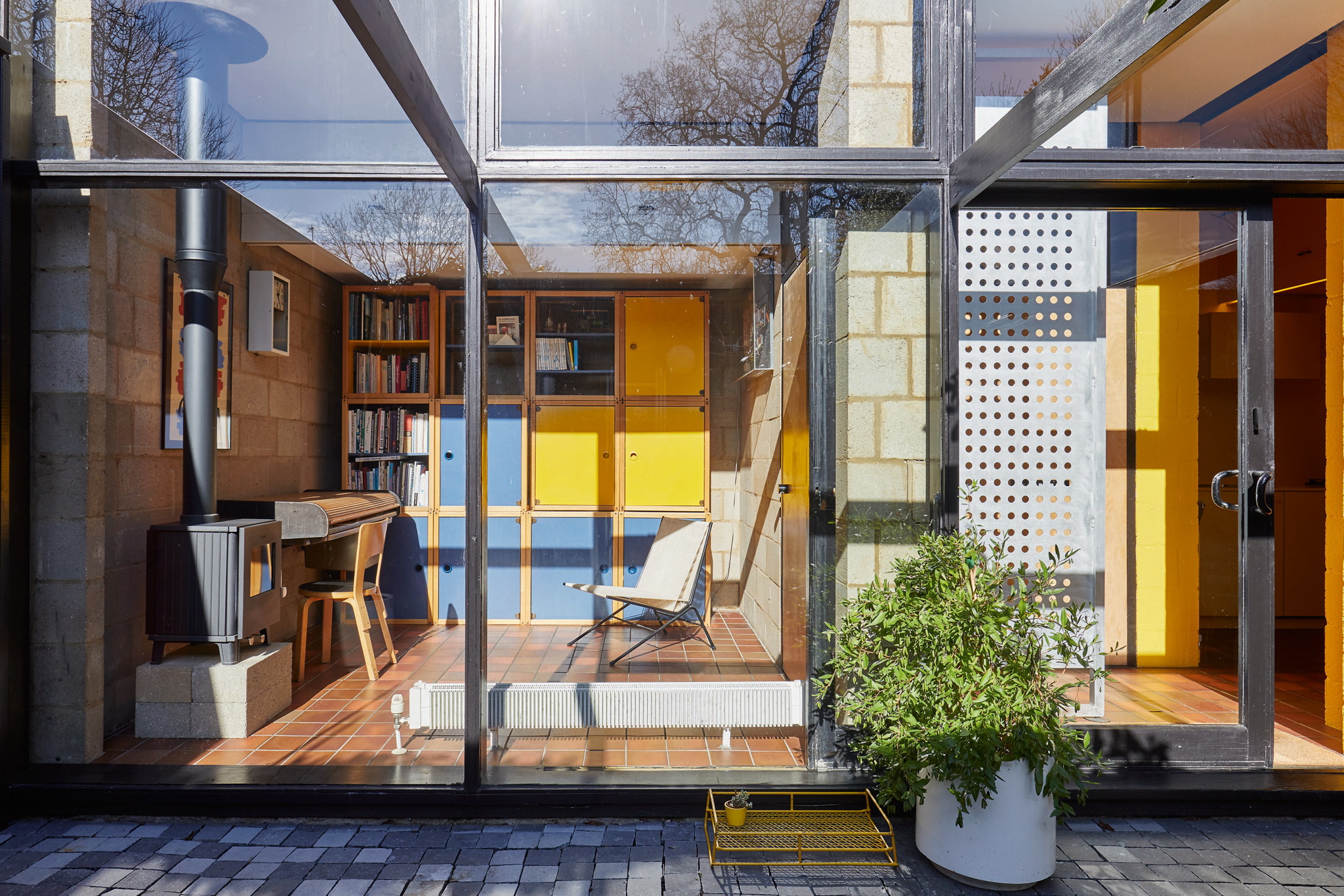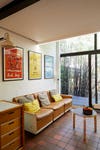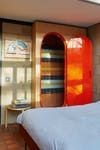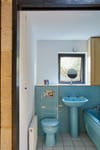In This South London Home, Color-Blocked Storage Keeps the Family Organized
Plus how the owners distract from their not-so-cute stove.
Published May 13, 2022 1:01 AM
We may earn revenue from the products available on this page and participate in affiliate programs.
The definition of eclectic—deriving ideas from a diverse range of sources, according to the Oxford English Dictionary—might as well say that there is no definition. A new book, The Life Eclectic by Alexander Breeze, out May 17, proves in its pages that the decor style is really in the eye of the beholder. One home is decked out in full English countryside glamour with layers of floral block prints and textured upholstery, while across the continent another only appears minimalistic until you reach the homeowner’s woodworking room. One design-savvy couple featured, Jason and Jenny Rose MacLean, lean into the aesthetic with bold primary colors and a mix of furniture eras (see: a yellow patterned refrigerator and tip-to-toe turquoise bathroom). Ahead, in an excerpt, we dive into the MacLeans’ London home and how they use hanging storage and geometric prints to distract the eye.
Behind a neon orange door, tucked away down a side street in Camberwell, South London, is the home of Jason and Jenny Rose MacLean, a design duo fond of bold color-blocking and hits of strong pattern. “We visited the Eames House in California and really wanted a home in London with a similar feel,” says Jason. “When we saw this one we knew it was for us.” The house was designed in the 1970s by architect Martin Crowley as his own home, and is built on the site of what was then two garages.
As the door onto the street closes behind you, you find yourself standing in a small cobbled courtyard. Plants are partly in Willy Guhl concrete planters, and the glass facade of the office space and bedroom allows light to fill the rooms. “The house and its structure completely dictated the decoration and furniture we chose,” says Jason. The space has its own distinctive voice—the contrasting textures in the breeze-block walls, the painted metal of the exposed structural supports—leading the MacLeans to sympathetically furnish and decorate the rooms in keeping with that aesthetic: “But it all felt very easy and natural, because of the types of things we were both into and collected. Everything just sat really well in the space, and over time we added to our collection and the house evolved.” They love the 1970s structure, and it shows. The German modular storage in the office and living room and key pieces of furniture, like the string chair by Allan Gould, fit perfectly in the space and sit proudly against their colorful backdrops.
The kitchen, a bright yellow space with concealed strip lighting and Hollywood starlet–style mirror lights, shows off the duo’s distinctive color-blocking. The pattern on the cupboards is by Eley Kishimoto, a longtime collaborator on various Studio MacLean projects. It’s partially repeated in the punched metal grilles (left over from an old project) layered between the office and hallway; the light filtering through cleverly casts bright spots on the blank wall opposite.
The shelving system that breaks up the long kitchen-living space is mostly for books, but one shelf is dedicated to a small collection of vintage toolboxes. “We have great overhead storage throughout the house, which is part of the original interior architecture,” Jason explains. “This allows us to rotate what we have out, although some things—like our French Brillié clock in the office—have always been in the same place. Other items, such as models, vintage toys, and pottery, come and go. Every so often it feels good to have a sort-out and put some new items on display.” But what is shown is carefully curated. As well as being color-blocked, items are displayed in groupings of similar pieces for greater impact. This is also the case with the artwork in the living room, original test prints from the 1930s to 1970s for Mac Fisheries supermarkets. “We actually have a massive collection of around 120 of them in storage. The ones in our living room were designed by Hans Schleger. The colors are so opaque and vibrant,” he adds.
Shortly after we photographed their house, the MacLeans sold the property and moved to rural Gloucestershire, to a ramshackle building—part of which dates back 300 years. A bit of a contrast. How will they decorate it? Jason’s not giving much away: “It’ll be similar, to an extent, but interpreted in a slightly different way. Sometimes I wake up in the middle of the night thinking: What have we done?! But it’s a new challenge.”
